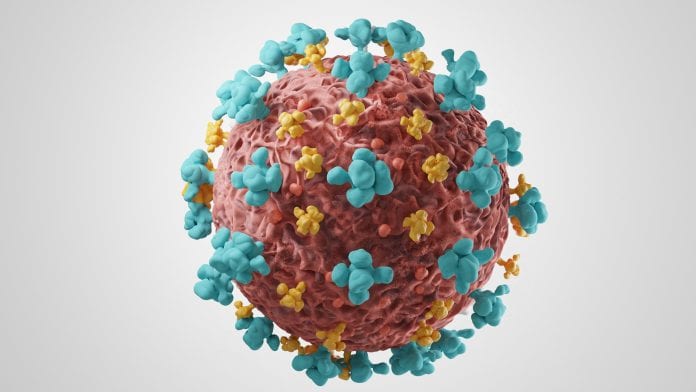
A new COVID-19 diagnostic test has been developed that can detect the virus even after it has mutated.
A team of scientists led by Nanyang Technological University, Singapore (NTU Singapore) has developed the test called the VaNGuard (Variant Nucleotide Guard), which uses CRISPR gene-editing technology. As well as its ability to detect SARS-CoV-2 coronavirus strain and any mutations, the VaNGuard test can be used on crude patient samples in a clinical setting without the need for RNA purification – yielding results in 30 minutes.
This is a third of the time required for the gold standard polymerase chain reaction (PCR) test, which requires purification of RNA in a lab facility.
The findings have been published in the journal Nature Communications.
Diagnostics innovation
The VaNGuard test relies on a reaction mix containing enAsCas12a, a variant of the enzyme Cas12a that acts like a pair of molecular scissors. The enzyme enAsCas12a is ‘programmed’ to target specific segments of the SARS-CoV-2 genetic material and to cut them off from the rest of its viral genome, which is how the enzyme ‘detects’ the presence of the virus. The programming is done by two different molecules known as guide RNAs, which are designed to recognise specific sites on the SARS-CoV-2 genome.
The scientists decided to use two guide RNAs that recognise sequences that are similar between variants of SARS-CoV-2, and are also unique to the virus. Each guide RNA is computationally predicted to recognise over 99.5% of the thousands of SARS-CoV-2 isolates that have been sequenced around the world.
Associate Professor Tan, from NTU’s School of Chemical and Biomedical Engineering, explained: “Combining two or more guide RNAs with the enzyme enAsCas12a ensures that if one of the guide RNAs fails to guide it to the correct segment of the virus because of a mutation, the other guide RNA can still ‘rescue’ this mismatch.”
So far, the made-in-NTU diagnostic platform can recognise up to two mutations within the target sites on the SARS-CoV-2 genome.
When the SARS-CoV-2 virus or one of its variants is detected in a sample, the engineered Cas12 enzyme variant enAsCas12a becomes hyper-activated and starts cutting other detectable genetic material in the sample as well, including a molecule tagged with a fluorescent dye that is added to the reaction mix.
Tan added: “If the virus is present, the molecule will glow. If not, it means the virus is not present to cause the hyper-activation of the molecular scissors.
“Viruses are very smart. They can mutate, edit, or shuffle their genetic material, meaning diagnostic tests may fail to catch them. Hence, we spent considerable effort developing a robust and sensitive test that can catch the viruses even when they change their genetic sequences. In addition, frequent testing is essential for helping to break the transmission of viruses within populations, so we have developed our tests to be rapid and affordable, making them deployable in resource-poor settings.”
The scientists validated the VaNGuard test’s ability to detect SARS-CoV-2 variants by synthesising an RNA sample that has the same mutated sequence as a known SARS-CoV-2 variant.







